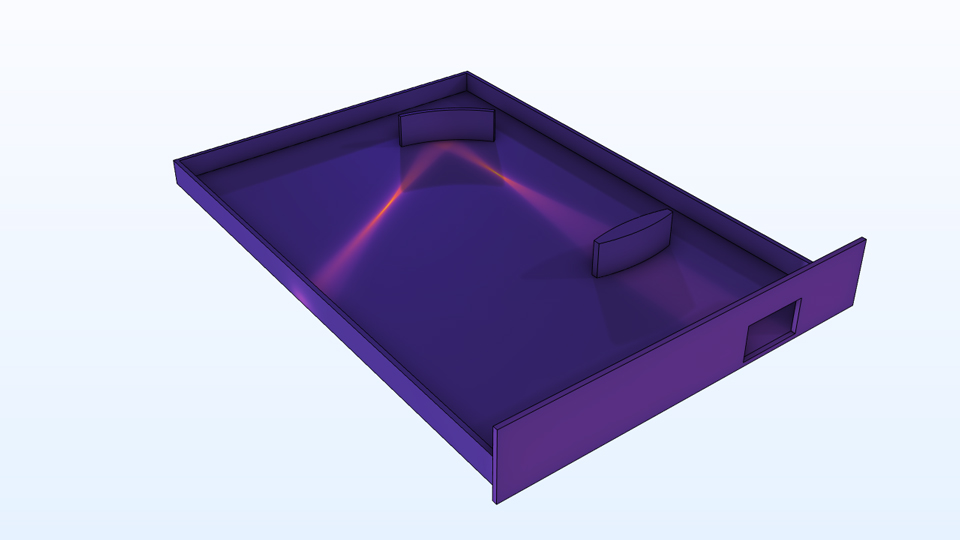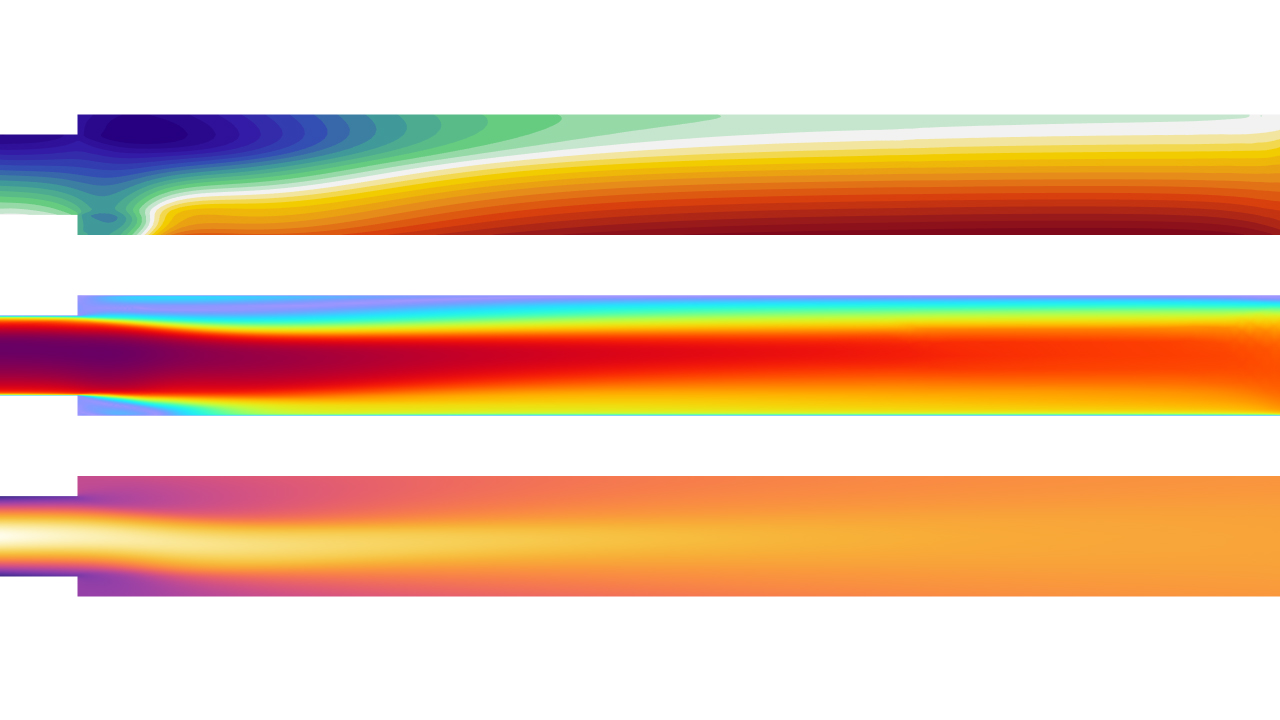Heat Transfer Module Updates
For users of the Heat Transfer Module, COMSOL Multiphysics® version 6.4 introduces performance improvements and a new polychromatic model for thermal radiation in participating media, as well as support for modeling specular refraction. Learn more about these updates below.
Performance Improvements for Thermal Radiation in Participating Media
A new formulation of the Discrete ordinates method, which is now the default discretization approach for the Radiation in Participating Media and Radiation in Absorbing-Scattering Media interfaces, has been implemented. Together with improved solver settings, this formulation greatly reduces CPU time and memory requirements, especially for quadrature sets with a large number of directions. The following tutorial models showcase these improvements:
To see more examples of how the new formulation improves performance, see the table below, which compares how the formulation affects computation time for different models.
| Model | 6.3 with Old Default Solver | 6.4 with New Default Solver | Speedup |
|---|---|---|---|
| Boiler — Coarsened Mesh — T8 Quadrature | 5 h 1 min 5 s | 57s | 316x |
| Glass Plate — Coarsened Mesh — T8 Quadrature | 3 h 30 min 50 s | 7 min 51s | 26x |
| Radiative Heat Transfer in Finite Cylindrical Media | 10 min 7 s | 37s | 16x |
| Discrete Ordinates Quadrature Sets for Heat Transfer with Radiation in Participating Medium — T8 Quadrature |
1 h 34 min 57 s | 45s | 126x |
The computation time for different tutorial models with a large number of directions when using the previous and new default solver.
The Weighted Sum of Gray Gases Model
In addition to the stepwise gray model, a new polychromatic model, Weighted Sum of Gray Gases Model, is now available for the Radiation in Participating Media interface. This option makes it possible to model nongray gases as a mix of several gray gases, each represented by different radiative properties. The combined contribution of these gases provides an accurate representation of real gas behavior across the whole wavelength spectrum. This approach is particularly relevant in the field of combustion. The new feature can be seen in the tutorial models Combustion Chamber and Predicting Wall Temperatures in a Smoke Exhaust Duct.

Refraction in Surface-to-Surface Radiation Interfaces
The Surface-to-Surface Radiation and Orbital Thermal Loads interfaces can now be used to model refraction according to Snell’s law. This new functionality is particularly useful for modeling radiative heat transfer involving collimated sources, such as solar radiation or laser light sources. Two new features have been introduced to support this capability: Refractive Interface and Dielectric Window. Both features use Fresnel’s relations to define the specular reflectivity and the transmissivity. the Dielectric Window feature additionally models a thin dielectric layer that can absorb radiation depending on the angle of incidence. The new capability can be seen in the Thermal Radiation with Refraction tutorial model.

New Tutorial Models
COMSOL Multiphysics® version 6.4 introduces several new tutorial models to the Heat Transfer Module.






